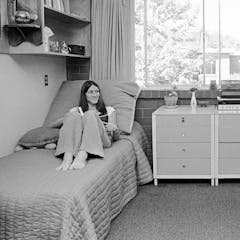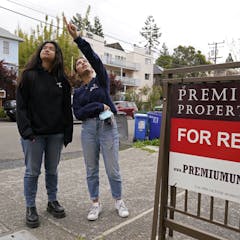
Articles on Student housing
Displaying all articles

International students frequently face challenges finding suitable places to live. Instead of blaming them, the government should be helping them.

Local governments have far too often been let off the hook for approaches that discreetly limit where students may live.

Student residences built in recent decades prioritize privacy, yet research shows a lack of student socialization spaces negatively affects students’ academic performance and well-being.

There are no ‘silver bullet’ solutions to a crisis that has left both renters and owners struggling. Only a comprehensive package of bold policies can ensure all Australians are securely housed.

As Australians struggle to find affordable housing, there have been hostile responses to reports of a sudden influx of international students from China. It’s time for a reality check.

About one in four international students were in severe financial stress just before COVID hit, and soaring rents and record low vacancies are likely to make their plight even worse now.

Governments and universities have failed to prepare for an increase in housing demand amid planned enrolment growth in higher education and a crisis driven by treating housing as an investment.

Universities should look to democratic innovations seen in society like ‘mini publics’ where citizens deliberate about critical issues in representative forums.

Even before the pandemic added to their financial stresses, a survey of international students suggests more than 20,000 were renting beds that are available to them for only certain hours.

The residential hall for international and local university students equipped them for a globalised world, more than anything they could learn in a class.

Australia has student accommodation with nearly 100,000 beds, many now empty. The large purpose-built student housing facilities are well suited for quarantining returning international students.

Of the students with jobs, 60% lost them and and two-thirds of the rest had hours cut. As they struggled, and often failed, to get rents and tuition fees reduced, precarious lives became even harder.

Even before COVID-19, 22% of international students often went without food or necessities and almost half depended on paid work to cover the rent. With many of their jobs gone, they’re now desperate.

New research reveals that poorer students are less likely to leave home for university – and that has serious impacts on their experience.

Local residents of St Andrews feel university growth has come at too high a cost – it’s time for local councils and universities to overcome the divide between town and gown.

What does it really mean to be “ready” for university? Research involving more than 3000 high school learners and first year university students have tried to answer this complex question.

Mayfair, Belgravia and Kensington: all London boroughs associated with affluence and grandeur, not student accommodation. But today these areas play host to a burgeoning student population. With the internationalisation…
